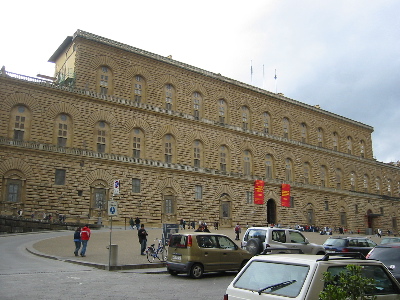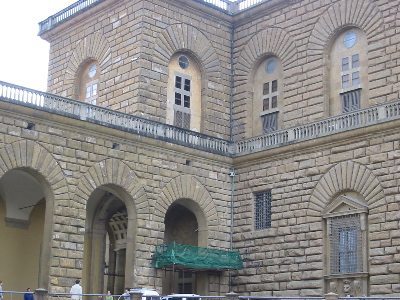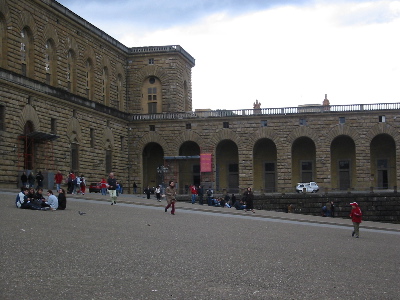Hi this is my notebook.
The design for the fascade of the Palazzo Pitti is said to be attributed to Filippo Brunelleschi. The plans for this palace were designed in 1458, but the actual construction did not begin until 10 years after Brunelleschi's death and not fully completed until 1783 (after being worked on by multiple architects including Bartolomeo Ammannati and Alfonso Parigi). Brunelleschi's structure reflects what is believed to be his idea about what a Renaissance palace should look like, that is, a cube equal in both heigh and depth and covered in "rustic stone-work" on the fascade of the building. The fascade which Brunelleschi designed was later extended to three times its original length. One of the most striking things upon viewing the Palazzo Pitti is that the window are as big as the doors. The palace has three floors with three entrance doors on the ground floor and seven windows on each side of the two upper floors. Brunelleschi enabled the windows and doors to be the same size by surrounding every one of them with symmetrical corbelled arches. Gordon discusses how the structural function of an arch is to support the downward loads that come upon it by turning them into a lateral thrust that runs around the ring of the arch. Thus, by spanning the entire fascade of the palace with arches, Brunelleschi has allowed the downward loads of the building to be distributed among the rings of all the arches. Thus, it seems not surprising that the palace remains in such good condition as arches not only survive well (compared to other architecture) but their inherent stability (as Gordon reminds us that it is very difficult to get a true arch to fall down) lead to an overall greater stability for the entire building. I also found it interesting that the arches on the two sides of the fascade connect right below the arch and share the same piers, allowing the downward loads to thrust against each other. Does this create greater stability because each arch provides resistance to the other arches?
-- NewMember? - 05 Apr 2005  Copyright &© by the contributing authors. All material on this collaboration platform is the property of the contributing authors.
Copyright &© by the contributing authors. All material on this collaboration platform is the property of the contributing authors.
Ideas, requests, problems regarding TWiki? Send feedback
- Palazzo Pitti (Brunelleschi, 1458):

- Palazzo Pitti (Brunelleschi, 1458):

- Palazzo Pitti (Brunelleschi, 1458):

Ideas, requests, problems regarding TWiki? Send feedback